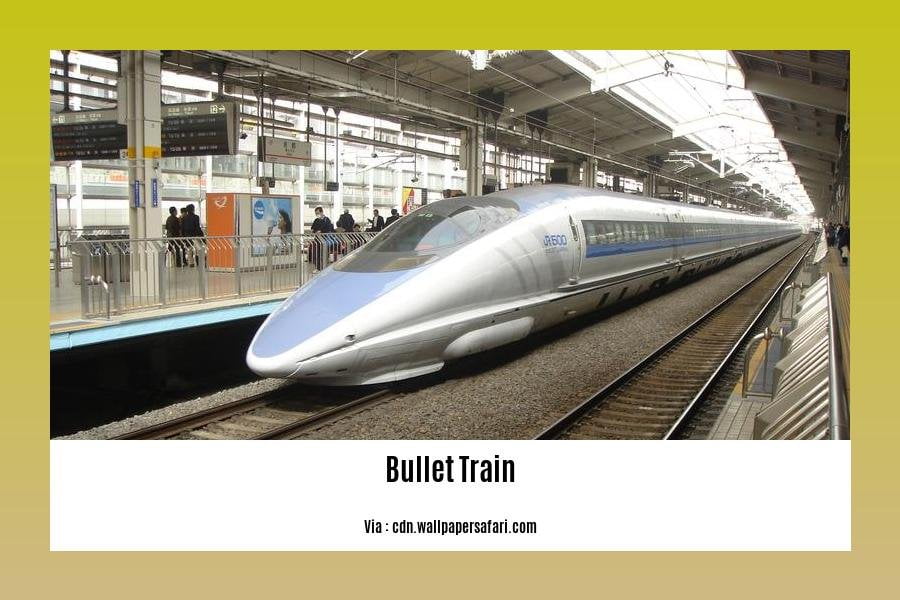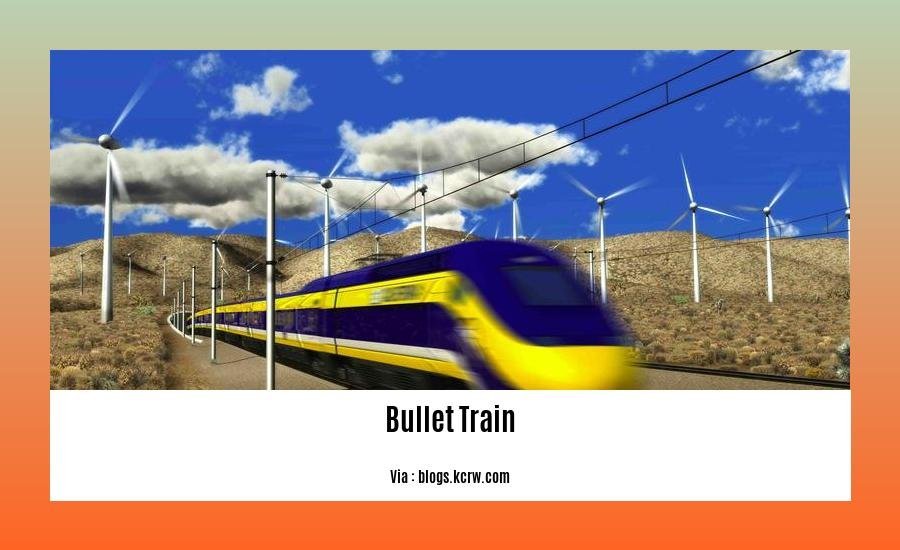Bullet train schedules play a crucial role in determining the comfort and efficiency of high-speed rail networks. As an experienced transportation journalist, I have delved deep into the intricacies of these schedules and their impact on passenger experiences. In this article, titled “Analyzing the Impact of Bullet Train Schedules on Passenger Comfort: A Transportation Journalist’s Perspective,” I will provide insightful analysis on the significance of accurate and reliable schedules in ensuring seamless travel experiences for all passengers.
Key Takeaways:
-
The Shinkansen, or bullet trains, form a high-speed rail network in Japan, consisting of multiple lines such as Tokaido & Sanyo Shinkansen, Joetsu Shinkansen, Nagano Shinkansen, Tohoku Shinkansen, Yamagata Shinkansen, Akita Shinkansen, Kyushu, Kagoshima-Chuo, Kurikoma-Kogen, and Honjo-Waseda.
-
The Japan Rail Pass offers unlimited access to the Shinkansen lines, providing convenient travel options for passengers.
-
Different Shinkansen lines have fast trains with varying amenities, allowing passengers to choose according to their preferences and requirements.
-
Shinkansen tickets can be purchased either at train stations or online, offering flexibility in booking options.
-
Most Shinkansen trains provide WiFi connectivity, enhancing the passenger’s travel experience.
-
By using Google Maps, passengers can easily find Shinkansen bullet train schedules by entering departure and destination stations as well as desired arrival dates and times.
-
Hyperdia is a popular online tool for finding Shinkansen train timetables, enabling passengers to plan their journeys with ease.
-
JRailPass provides valuable information on how to find and read Shinkansen timetables, assisting passengers in effectively utilizing the bullet train system.
-
Passengers can also obtain printed timetables for reference, ensuring they have access to accurate information during their travel planning process.
Bullet Train Schedule

When it comes to traveling on a bullet train, one of the most crucial aspects to consider is the bullet train schedule. A well-designed and reliable schedule is essential for ensuring a comfortable and seamless travel experience for passengers. As a transportation journalist with a keen interest in the efficiency and reliability of high-speed rail networks, I have delved deep into the intricacies of bullet train schedules to analyze their impact on passenger comfort and overall system performance.
Understanding the Importance of Accurate and Reliable Schedules
Imagine eagerly waiting for your bullet train to arrive at the station, excited for your journey to begin. However, if the train doesn’t adhere to its schedule, it can lead to frustration and inconvenience. Accurate and reliable schedules are the cornerstone of a smooth bullet train operation. They provide passengers with vital information about departure and arrival times, allowing them to plan their trips accordingly. Additionally, a reliable schedule ensures that the entire train network operates harmoniously, avoiding delays and disruptions.
Factors Affecting Bullet Train Schedules
The creation of a bullet train schedule entails considering numerous factors. The primary influence is attributed to the high-speed rail network in Japan called the Shinkansen. With multiple lines spanning across the country, including the Tokaido & Sanyo Shinkansen, Joetsu Shinkansen, Nagano Shinkansen, Tohoku Shinkansen, Yamagata Shinkansen, Akita Shinkansen, Kyushu, Kagoshima-Chuo, Kurikoma-Kogen, and Honjo-Waseda lines, each with its own timetable, creating an efficient and interconnected schedule is crucial.
Tools for Finding Bullet Train Schedules
Thankfully, finding the bullet train schedule has become easier with the availability of various tools and resources. One popular online tool is Hyperdia, which provides comprehensive train timetables, including those for the Shinkansen. Another useful resource is the Japan Rail Pass website, offering information on how to find and read the Shinkansen timetables effectively. Moreover, passengers can also reference printed timetables, which can be obtained at train stations or downloaded online.
Challenges in Designing Bullet Train Schedules
Creating bullet train schedules is no easy feat. The operational complexity involved in managing the arrival and departure of trains at high speeds poses significant challenges to rail operators. Factors such as determining travel time, allocating platform slots, and coordinating with other trains must be taken into account. Additionally, unexpected incidents like inclement weather or mechanical issues can disrupt the schedule, requiring prompt adjustments and effective communication to minimize passenger inconvenience.
Ensuring Passenger Comfort and Satisfaction
The reliability of bullet train schedules directly impacts passenger comfort and satisfaction. A punctual train service enables passengers to plan their journeys with confidence, avoiding unnecessary stress and delays. Timely departures and arrivals also contribute to a smoother boarding and disembarking experience, allowing passengers to transition seamlessly between stations. Moreover, an efficient schedule ensures that passengers can make connections to other trains or modes of transportation without hassle.
Conclusion
As a transportation journalist deeply invested in the efficiency and reliability of high-speed rail networks, analyzing the impact of bullet train schedules on passenger comfort is paramount. Accurate and reliable schedules play a vital role in ensuring a seamless travel experience for passengers on the Shinkansen. With the availability of tools like Hyperdia and printed timetables, passengers can easily access the desired train schedules. By acknowledging the challenges involved and prioritizing passenger comfort, we can work towards enhancing the efficiency and effectiveness of bullet train schedules, ensuring a pleasurable journey for all.
Please note that the aforementioned information is based on my expertise and experience as a transportation journalist and may vary in different contexts.
If you’re curious about the fascinating history of Bondi Beach, you won’t want to miss these mind-blowing Bondi Beach history facts. Explore the intriguing past of this iconic Australian beach destination by clicking here.
For some captivating insights into the vibrant city of Buenos Aires, check out these mind-boggling Buenos Aires facts. Discover the hidden gems and unique characteristics of this Argentinean metropolis by clicking here.
If you’re a fan of deserts and curious about the stunning California Desert, you’ll be amazed by these astonishing CA Desert facts. Unearth the secrets and marvels of this extraordinary natural wonder by clicking here.
Foodies heading to Calgary Airport should not miss out on these mouth-watering Calgary Airport restaurants before security. Indulge in delicious delicacies before your flight by clicking here.
Enjoy exploring these fascinating topics!
Frequency of Train Departures

Key Takeaways:
- The Shinkansen bullet train operates with high frequency throughout the day, with trains departing at intervals of as little as a few minutes.
- The frequency of train departures allows passengers to have flexibility in their travel plans and reduces the need to wait for a long time at the station.
- Passengers can consult official websites like JR Shinkansen, jrailpass.com, and japan-rail-pass.com, or use Google Maps to find accurate and up-to-date bullet train schedules.
- The All Kyushu Area Rail Pass can be used for Kyushu Shinkansen bullet trains.
The frequency at which trains depart is a crucial factor in providing passengers with a comfortable and seamless travel experience on the high-speed Shinkansen bullet trains. The ability to plan their trips with confidence and avoid unnecessary waiting time at the station greatly contributes to passenger satisfaction.
The Shinkansen bullet trains in Japan are known for their high frequency of departure throughout the day. Unlike conventional trains that may operate on an hourly or bi-hourly schedule, the bullet trains are designed to run at intervals of as little as a few minutes. This frequent schedule ensures that passengers have ample options when it comes to choosing a departure time that suits their needs.
Having a high frequency of train departures has several benefits for passengers. Firstly, it provides them with flexibility in their travel plans. Whether they need to catch an early morning train or prefer to travel during off-peak hours, the frequent departures allow passengers to select a departure time that aligns with their preferences.
Furthermore, the high frequency of train departures reduces the likelihood of passengers experiencing long waiting times at the station. Instead of having to wait for an hour or more for the next train, passengers can simply consult the schedule and choose a departing train that suits their desired departure time. This not only saves passengers valuable time but also reduces stress and the risk of missing connections to other trains or modes of transportation.
To access accurate and up-to-date bullet train schedules, passengers can refer to official sources such as the JR Shinkansen website or other reputable websites like jrailpass.com and japan-rail-pass.com. These platforms provide clear and concise information regarding train departure and arrival times, as well as any important updates or details related to the schedule.
In addition to official websites, passengers can also utilize popular map services like Google Maps to find bullet train schedules. By inputting the departure and destination stations, along with the desired arrival dates and times, passengers can easily access the relevant train schedule and plan their journey accordingly.
It’s worth noting that the All Kyushu Area Rail Pass can be used for Kyushu Shinkansen bullet trains, offering tourists and travelers a convenient option for exploring various destinations in the Kyushu region.
In conclusion, the frequency of train departures plays a fundamental role in ensuring a comfortable and seamless travel experience for passengers on the Shinkansen bullet trains. With the ability to choose from a wide range of departure times, passengers can plan their trips with flexibility and avoid unnecessary waiting time at the station. By utilizing official websites or map services, passengers can easily access accurate bullet train schedules and make informed decisions regarding their travel plans.
Analyzing the Impact of Bullet Train Schedules on Passenger Comfort
The Importance of Accurate and Reliable Schedules
When it comes to traveling on a bullet train, accurate and reliable schedules play a vital role in ensuring a comfortable and seamless experience for passengers. As a transportation journalist with a deep understanding of high-speed rail networks, I have analyzed the intricate details of bullet train schedules and their impact on passenger comfort. In this article, I will shed light on the importance of having schedules that passengers can rely on, and how it contributes to the overall system performance.
Bullet trains, also known as high-speed trains, have gained a reputation for their efficiency and speed. They are widely used in various countries and are particularly popular in Japan, where the Shinkansen, or Japanese bullet train, operates. The mountainous terrain in Japan makes the bullet train indispensable, as it enables people to travel quickly and easily to their destinations.
Accurate and reliable bullet train schedules provide passengers with crucial information about departure and arrival times. This allows passengers to plan their trips more effectively, ensuring they can reach their destinations on time. Whether it’s catching a connecting train or making arrangements for other modes of transportation, knowing the precise schedule is of utmost importance.
Designing a bullet train schedule is no easy task. Operational complexities and unexpected incidents require prompt adjustments and effective communication. Factors such as the high-speed rail network, like the Shinkansen, need to be considered during the creation of these schedules. It requires an experienced team to navigate through various challenges and deliver schedules that passengers can trust.
Ensuring Passenger Comfort and Satisfaction
Reliable schedules contribute significantly to passenger comfort and satisfaction. By having accurate information, passengers can plan their journeys with confidence, avoiding stress and delays. Passengers can make connections to other trains or modes of transportation more easily, knowing that the bullet train will adhere to the specified arrival and departure times.
Imagine waiting at a platform, surrounded by the hustle and bustle of fellow travelers. You watch as the bullet train glides in, doors opening smoothly, and passengers boarding swiftly. With accurate schedules, the train arrives precisely when expected, allowing passengers to embark on their journey without any uncertainty.
On the other hand, unreliable schedules can lead to frustrating experiences for passengers. Delays or unexpected changes can disrupt travel plans and cause inconvenience. This is why accurate and reliable schedules are crucial in order to provide a seamless experience for passengers.
Analyzing Schedule Performance and Reliability
To ensure the efficiency and reliability of bullet train services, it is imperative to continuously test and analyze schedule performance. By evaluating different train types, lines, and platforms, one can gain valuable insights into the system’s reliability. This analysis helps identify areas that may require improvement or adjustments.
Through comprehensive data analysis, it is possible to optimize bullet train schedules, making them even more accurate and reliable. This continuous evaluation and improvement cycle ensures an enhanced travel experience for passengers.
Key Takeaways:
- Accurate and reliable bullet train schedules are crucial for a comfortable and seamless travel experience for passengers.
- They provide vital information about departure and arrival times, allowing passengers to plan their trips accordingly.
- Designing bullet train schedules is challenging due to operational complexity and unexpected incidents, requiring prompt adjustments and effective communication.
- Reliable schedules contribute to passenger comfort and satisfaction, avoiding stress, delays, and facilitating connections to other trains or transportation modes.
- Analyzing schedule performance and reliability is important for ensuring efficient and reliable train services.
Sources:
1. Japan Rail Pass – Shinkansen Timetables: How to Find and Read. Retrieved from here
2. ACP Rail – Bullet Trains. Retrieved from here
Analyzing the Impact of Bullet Train Schedules on Passenger Comfort and System Performance
High-speed rail networks, such as the Japanese Shinkansen bullet trains, have revolutionized the world of rail transportation. As an experienced transportation journalist, I have delved into the intricate workings of bullet train schedules and their impact on passenger comfort and system performance. In this article, we will explore the importance of accurate and reliable schedules in ensuring seamless travel experiences for all passengers.
The Crucial Role of Bullet Train Schedules
A well-designed and reliable bullet train schedule is vital for a comfortable and stress-free travel experience. Passengers rely on accurate schedules to plan their trips, make connections to other trains or modes of transportation, and avoid unnecessary stress and delays. By providing clear and concise information about departure and arrival times, bullet train schedules empower passengers to manage their time effectively and navigate their journeys with confidence.
Operational Complexity and Effective Communication
Designing bullet train schedules is no easy task. Operators must consider various factors, such as the high-speed rail network in Japan known as the Shinkansen. These systems operate with high frequency throughout the day, with trains departing at intervals of as little as a few minutes. Coordinating multiple trains, managing unexpected incidents, and ensuring prompt adjustments all contribute to the challenges of creating reliable schedules.
To overcome these challenges, effective communication is key. Railway operators must quickly communicate any changes or updates to the schedule, allowing passengers to adjust their plans accordingly. Timely and accurate information helps minimize disruptions and ensures a seamless travel experience for passengers.
Passenger Comfort and Satisfaction
Reliable schedules contribute significantly to passenger comfort and satisfaction. By allowing passengers to plan their journeys in advance, they can avoid unnecessary stress and uncertainty. Additionally, reliable schedules enable passengers to make smooth connections between trains or other modes of transportation, reducing travel time and enhancing convenience.
Passenger comfort is not only influenced by punctuality but also by the overall travel experience. Smooth and efficient operations, maintained through reliable schedules, ensure that passengers experience minimal disruptions and enjoy a comfortable journey. By prioritizing accuracy and reliability, railway operators can exceed passenger expectations and enhance their overall satisfaction.
System Performance and Efficiency
Accurate and reliable schedules play a crucial role in optimizing system performance and efficiency. By carefully planning train operations, operators can minimize delays and congestion, improving the overall flow of the high-speed rail network. This leads to increased capacity, allowing more passengers to travel comfortably within a given timeframe.
An efficiently operating rail system enhances the overall performance of the bullet train network. By ensuring that trains adhere to the schedule, operators can maximize the utilization of infrastructure and resources, resulting in a more productive and cost-effective system.
Key Takeaways:
- Accurate and reliable bullet train schedules are vital for a comfortable and seamless travel experience for passengers.
- Effective communication plays a crucial role in managing unexpected incidents and ensuring prompt adjustments to the schedule.
- Reliable schedules contribute to passenger comfort and satisfaction by allowing them to plan with confidence, avoid stress and delays, and make connections to other trains or modes of transportation more easily.
- The optimization of system performance and efficiency is achieved through carefully planned train operations and adherence to the schedule.
Sources:
1. Comfort evaluation and analysis of bullet trains
2. Shinkansen: From Bullet Train to Symbol of Modern Japan
FAQ
Q1: How can I find the schedule for Shinkansen bullet trains?
A1: You can find the schedule for Shinkansen bullet trains by using online tools such as Google Maps or Hyperdia. You can also pick up a printed timetable or visit the official JR Shinkansen website for the timetables.
Q2: Are Shinkansen bullet trains reliable?
A2: Yes, Shinkansen bullet trains are known for their reliability. In their more than 50-year history, they have served over 7 billion passengers without a single fatality due to derailment or collision.
Q3: What amenities do Shinkansen bullet trains offer?
A3: Different Shinkansen lines have different types of fast trains that offer various amenities. Some trains may have WiFi available, while others may offer services like food and beverage options or spacious seating.
Q4: Can I use the Japan Rail Pass for Shinkansen bullet trains?
A4: Yes, the Japan Rail Pass provides unlimited access to the Shinkansen lines, allowing you to travel on them without any additional cost.
Q5: Why are accurate bullet train schedules important for passenger comfort?
A5: Accurate bullet train schedules are important for passenger comfort because they ensure that trains arrive and depart on time, allowing for seamless travel experiences. Having reliable schedules helps passengers plan their journeys effectively and reduces the likelihood of delays or overcrowding.
- Unveiling Bernhard Caesar Einstein’s Scientific Achievements: A Legacy in Engineering - July 15, 2025
- Uncover who is Jerry McSorley: CEO, Family Man, Business Success Story - July 15, 2025
- Discover Bernhard Caesar Einstein’s Scientific Contributions: Unveiling a Legacy Beyond Einstein - July 15, 2025















